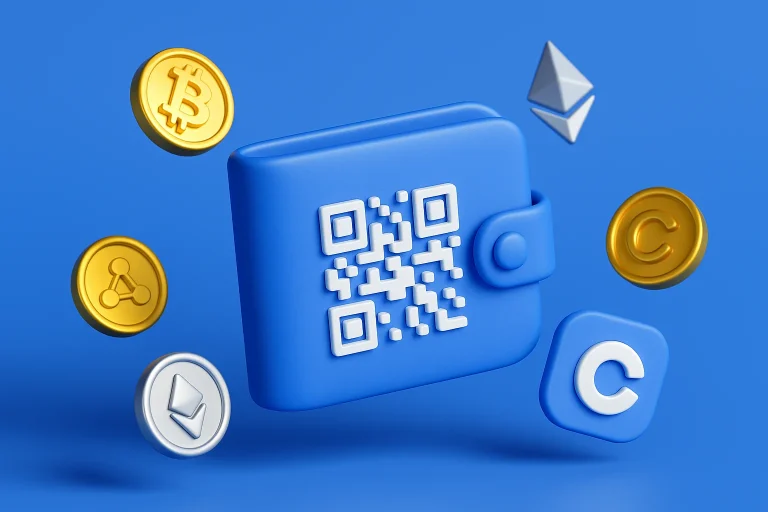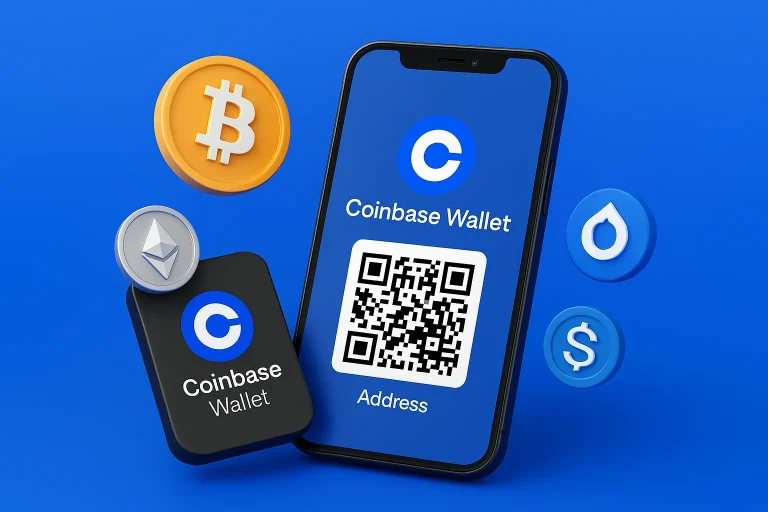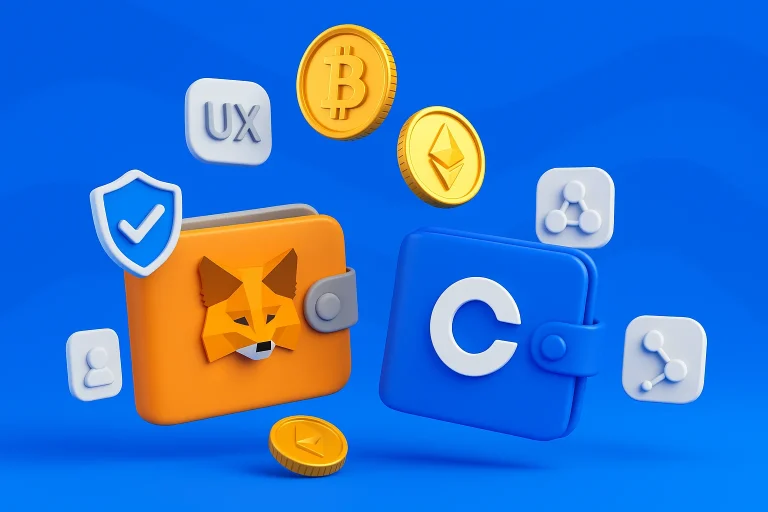Choosing the right blockchain platform can feel like a gamble. With so many claiming to offer the best speed, scalability, and decentralization, how do you know which one delivers?
Get it wrong, and you’ll quickly feel the consequences. Slow transactions, weak developer support, or a stagnant crypto ecosystem can cost you more than frustration; it can mean lost time, money, and missed opportunities.
To help you navigate this landscape, we’ve created a detailed comparison of Solana vs Cardano vs Polkadot vs Avalanche. We explain how each platform performs in key areas: consensus mechanism, scalability, interoperability, developer adoption, and token utility.
By the end, you’ll have a clear picture of which blockchain best aligns with your goals, whether you’re building, investing, or exploring.
Table of contents
- 1. Solana: The Fastest Blockchain for DeFi, NFTs, and Scalable Web3
- 2. Cardano: Secure, Sustainable Blockchain Built on Peer-Reviewed Research
- 3. Polkadot: Leading Interoperable Blockchain for Multi-Chain Web3
- 4. Avalanche: The Custom Blockchain Platform for Web3 at Enterprise Scale
- Solana vs Cardano vs Polkadot vs Avalanche: Feature-by-Feature Breakdown
- Solana vs Cardano vs Polkadot vs Avalanche: Use Cases & Real-World Applications
- FAQ
- Final Verdict: Solana, Cardano, Polkadot, or Avalanche
Quick Overview: Solana, Cardano, Polkadot, Avalanche |
|
|---|---|
| Solana | Consensus: Proof of History + PoS Transactions/sec: 65,000+ Finality: ~400 ms Smart Contracts: Rust/C/C++ Ecosystem: High-speed DeFi & non-fungible tokens Native Token: SOL |
| Cardano | Consensus: Ouroboros PoS Transactions/sec: ~250 Finality: ~5–10 mins Smart Contracts: Plutus/Haskell Ecosystem: Research-driven & slow rollout Native Token: ADA |
| Polkadot | Consensus: Nominated PoS Transactions/sec: 1,000 (relay chain) Finality: ~60 secs Smart Contracts: WASM Ecosystem: Interoperability hub Native Token: DOT |
| Avalanche | Consensus: Avalanche Consensus + Snowman Transactions/sec: 4,500+ (per subnet) Finality: ~2 secs Smart Contracts: Solidity/Subnets Ecosystem: Scalable multi-chain apps Native Token: AVAX |
1. Solana: The Fastest Blockchain for DeFi, NFTs, and Scalable Web3
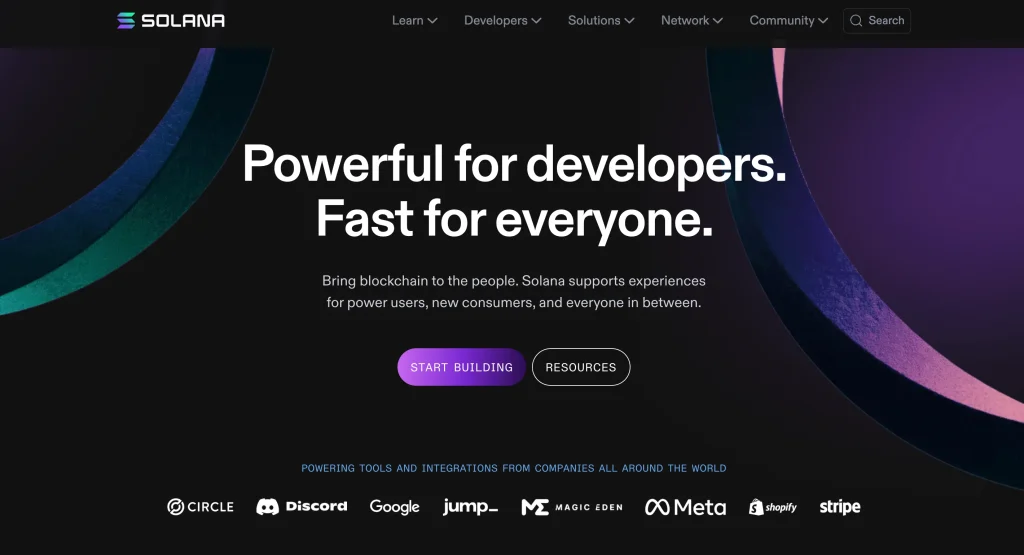
Solana is a high-performance decentralized network designed for ultra-fast, low-cost transactions. It’s built for speed, enabling thousands of decentralized applications (dApps) and NFTs to run without bottlenecks.
Specifications |
|
|---|---|
| Proof of History (PoH) + PoS | Solana’s unique PoH timestamping system enables speedy ordering of transactions before reaching consensus through PoS. |
| Blazing Transaction Speed | Capable of 65,000+ TPS in ideal conditions; typically achieves 1,000–3,000 TPS in real-world environments. |
| Ultra-low Latency | Block finality in ~400 milliseconds allows near-instant confirmation. |
| Developer-Friendly Stack | Supports Rust, C, and C++, powerful but has a steeper learning curve. |
| Ecosystem Strength | Thriving in NFTs, DeFi, and gaming, with strong community growth despite past network outages. |
2. Cardano: Secure, Sustainable Blockchain Built on Peer-Reviewed Research
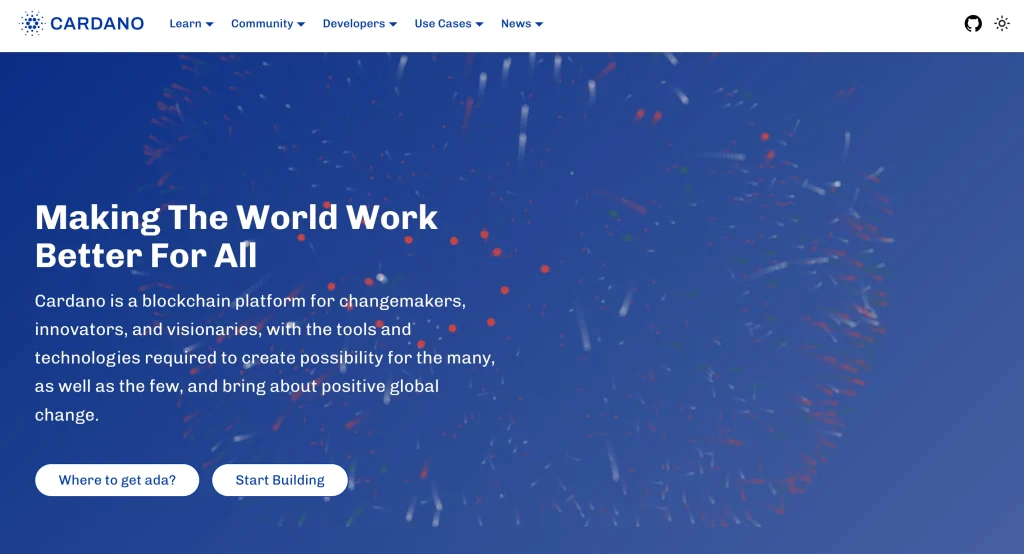
Cardano is a research-driven platform known for energy efficiency, enabling smart contracts, and formal verification. Built in Haskell and Plutus, it aims to serve governments, institutions, and users needing strong compliance.
Additionally, explore the top Cardano wallets for 2025 and beyond.
Specifications |
|
|---|---|
| Ouroboros PoS Protocol | A scientifically-reviewed consensus model prioritizing security, energy efficiency, and long-term sustainability. |
| Two-Layer Architecture | Splits computation (CCL) and settlement (CSL), improving modularity and scalability. |
| Smart Contracts via Plutus | Built using Haskell, offering high assurance but slower adoption due to the learning curve. |
| Hydra Layer 2 Scaling | Promises millions of TPS in the future via off-chain “Hydra heads”; currently early in deployment. |
| Slow but Steady Roadmap | Emphasizes research, formal verification, and regulatory readiness over rapid experimentation. |
3. Polkadot: Leading Interoperable Blockchain for Multi-Chain Web3
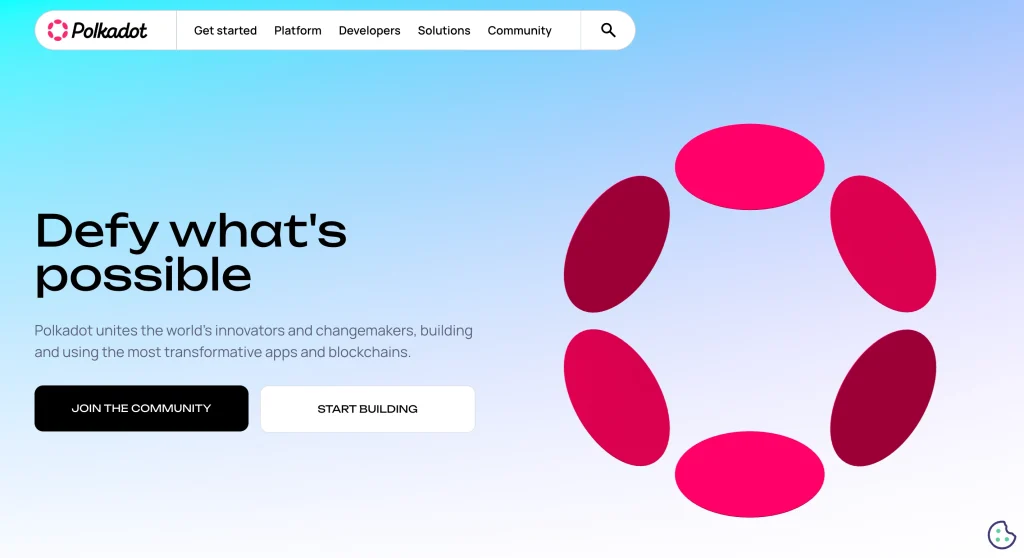
Polkadot aims to create a scalable, modular Layer 0 network that connects diverse blockchains. It allows developers to build on the Polkadot network using Substrate and supports true interoperability via XCMP.
The Polkadot ecosystem thrives with parachains tailored for everything from DeFi to IoT, making it a strong contender in the blockchain space.
Specifications |
|
|---|---|
| Nominated PoS + Parachains | Uses BABE and GRANDPA consensus mechanisms with a unique system of interconnected parachains. |
| True Cross-Chain Messaging | XCMP and HRMP protocols enable trustless, native communication between parachains. No bridges required. |
| Shared Security via Relay Chain | Parachains inherit security while maintaining execution independence. |
| Substrate Framework | Allows developers to build custom blockchains with tailored logic and consensus. |
| Parachain Auctions | Slots are limited, and competition can be costly, but this model fosters innovation and community backing. |
4. Avalanche: The Custom Blockchain Platform for Web3 at Enterprise Scale
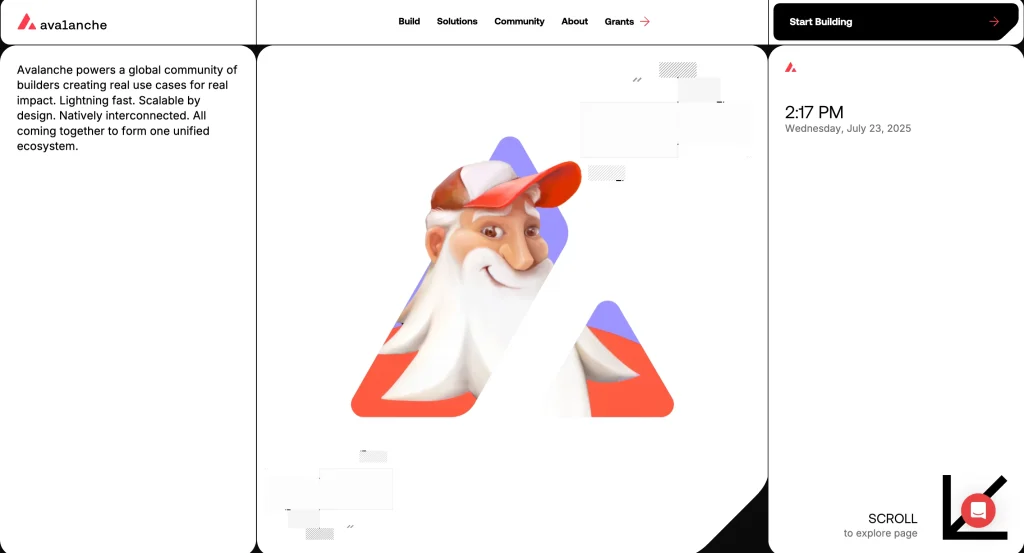
Avalanche stands out for its subnet architecture. Subnets are launched across the C-Chain (contract chain), P-Chain (platform chain), and X-Chain (exchange chain), giving devs control over consensus, economics, and compliance.
It supports Ethereum tooling via the programming languages Solidity and Vyper, offering flexibility and fast integration.
Specifications |
|
|---|---|
| Avalanche + Snowman Consensus | Uses probabilistic consensus with near-instant finality (~2 seconds) while staying decentralized. |
| EVM Compatibility | Full support for Solidity and Ethereum tooling, making migration and onboarding seamless. |
| Subnets for Customization | Developers and enterprises can launch independent blockchains (subnets) with their validators, rules, and economics. |
| Scalability Without Sacrifice | Each subnet processes transactions in parallel, enabling thousands of TPS network-wide. |
| Enterprise Ready | Attracts partnerships like Deloitte, AWS, and Alibaba Cloud due to customizable compliance features. |
Solana vs Cardano vs Polkadot vs Avalanche: Feature-by-Feature Breakdown
1. Consensus Mechanisms: How They Secure Their Networks
Solana PoH
Solana’s breakthrough innovation is Proof of History (PoH), a cryptographic timestamping technique that orders transactions before consensus.
PoH acts like a decentralized clock, reducing the communication overhead between nodes. Validators then run Proof of Stake (PoS) to agree on the blockchain state.
Strengths:
- Enables ultra-high throughput (up to 65,000 TPS theoretically).
- Near-instant finality (~400 ms).
Trade-offs:
- Requires highly specialized, powerful hardware for validators.
- Network outages have occurred, partly due to this complexity.
- Some argue it’s less decentralized due to high hardware barriers.
Cardano Ouroboros
Cardano’s consensus is based on Ouroboros, the first peer-reviewed PoS protocol. It uses epochs and slots to randomly elect block producers, emphasizing provable security and energy efficiency.
Ouroboros divides the blockchain into two layers: settlement (CSL) and Computation (CCL), enhancing modularity.
Strengths:
- High security with formal verification.
- Low energy consumption compared to PoW.
- Designed for long-term sustainability.
Trade-offs:
- Lower transaction throughput (~250 TPS).
- Slower block finality (5–10 minutes).
- Conservative upgrade path results in slower feature rollout.
Polkadot NPoS
Polkadot combines Nominated Proof of Stake for validator selection with two consensus protocols: BABE (block production) and GRANDPA (finality). NPoS allows DOT holders to nominate validators without running nodes, encouraging economic accountability.
Strengths:
- Strong security with slashing and nomination incentives.
- Efficient block production and fast finality (~60 seconds).
- Designed for a multi-chain environment with shared security.
Trade-offs:
- Parachain slot limitations require auctions, which can be competitive and costly.
- Complex architecture may increase development overhead.
Avalanche Consensus
Avalanche uses a novel consensus model based on repeated random subsampling of validators (Avalanche consensus) combined with Snowman for linear chains such as smart contracts. This allows fast, probabilistic finality without sacrificing decentralization.
Strengths:
- Finality in ~2 seconds, one of the fastest in space.
- Scalable and resilient consensus that works on commodity hardware.
- Supports complex custom blockchains via subnets.
Trade-offs:
- Less proven on a massive scale compared to older protocols.
- Subnet deployment introduces a learning curve.
2. Scalability: Throughput & Network Efficiency
Solana
While the theoretical max TPS exceeds 65,000, real-world constraints like network conditions and node processing reduce practical TPS to around 1,000–3,000 for most dApps.
Solana achieves this through PoH-enabled parallel transaction processing, but validator hardware demands and occasional network outages remain concerns.
Cardano
Currently processes ~250 TPS natively but plans to scale with Hydra, a Layer 2 solution that uses off-chain “heads” (channels). Each Hydra head can process ~1,000 TPS, and multiple heads can run in parallel, potentially scaling Cardano to millions of TPS. However, Hydra is still in the early stages of adoption.
Polkadot
Utilizes parachains, independent parallel blockchains that share security via the Relay Chain. Each parachain can implement its consensus and execution model, effectively distributing transaction load horizontally.
However, the number of parachain slots is limited (currently 100+), which can limit network-wide TPS until expansion.
Avalanche
Scales through subnets, each a customizable blockchain running its own validator set. Each subnet can process thousands of TPS independently, enabling high horizontal scalability.
This model is ideal for enterprises and use cases requiring compliance or custom rules, especially those managing large volumes of digital assets.
3. Interoperability: Cross-Chain Communication
Polkadot
Polkadot was built from day one for interoperability. Parachains communicate natively using XCMP (Cross-Chain Message Passing) and HRMP (Horizontal Relay-routed Message Passing), enabling encrypted, trustless messaging and asset transfers without relying on bridges.
This makes Polkadot a premier Layer 0 interoperability platform.
Avalanche
Supports interoperability via the Avalanche Bridge for significant assets like BTC and ETH and is developing cross-subnet protocols such as Teleport and HyperSDK to enable seamless asset and data transfer between subnets. Subnets can enforce regulatory compliance, offering unique flexibility.
Cardano
Interoperability is in progress. Projects like Midnight (a privacy-focused sidechain) and Mithril (a light client sync) aim to improve cross-chain connectivity and secure state verification. Cardano’s approach prioritizes security and regulatory compliance, though solutions are not yet production-ready.
Solana
It relies heavily on third-party bridges like Wormhole and Allbridge, which have experienced security breaches.
Native interoperability is limited, but improvements are underway with projects like Firedancer, which aim to enhance cross-network consistency and securely connect Solana with other blockchains.
4. Developer Experience & Ecosystem Maturity
Solana
- Languages: Rust, C, C++.
- Ecosystem: Robust NFT marketplaces (Magic Eden), DeFi protocols, and gaming platforms.
- Developer Tools: Growing SDKs, active hackathons, but Rust’s complexity can be a barrier.
- Community: Large and fast-growing, but a centralized validator set can be a concern.
Cardano
- Languages: Plutus, Haskell.
- Ecosystem: Focus on academic-grade projects, identity solutions (Atala PRISM), and governance (Project Catalyst).
- Developer Tools: Emphasizes formal verification and security, resulting in slower onboarding.
- Community: Strong academic and institutional backing, but smaller dApp ecosystem.
Polkadot
- Languages: Rust (via Substrate), ink! (Rust-based smart contracts), Solidity (via Moonbeam.
- Ecosystem: Rapidly expanding parachain projects, including DeFi, gaming, and IoT.
- Developer Tools: Substrate framework simplifies blockchain development; Moonbeam adds EVM compatibility.
- Community: Active, with substantial grants and community support.
Avalanche
- Languages: Solidity (EVM-compatible), custom VMs for subnets
- Ecosystem: Growing DeFi, NFT, and enterprise dApps; AWS and Alibaba Cloud integration for enterprise users.
- Developer Tools: Easy onboarding for Ethereum developers and subnet creation tools for customization.
- Community: Strong enterprise focus, attracting traditional businesses into Web3.
5. Token Utility & Economics
Specifications |
|
|---|---|
| SOL | Utility & Use Cases: Transaction fees, staking, and upcoming governance. Supply Model & Economics: Inflationary (~8% decreasing), validator rewards from fees & inflation. |
| ADA | Utility & Use Cases: Staking, governance, identity verification. Supply Model & Economics: Fixed supply (45B), staking rewards, community treasury (Project Catalyst). |
| DOT | Utility & Use Cases: Staking, governance, bonding for parachain slots. Supply Model & Economics: Inflationary (~10%), balancing staking demand with network growth. |
| AVAX | Utility & Use Cases: Fees, staking, subnet creation, governance. Supply Model & Economics: Fixed max supply (720M), variable staking rewards, subnet fee sinks. |
6. Governance and Decentralization
- Solana is still relatively centralized, though it is moving toward more open governance models.
- Cardano has community funding through Project Catalyst and is rolling out full on-chain governance with Voltaire.
- Polkadot has one of the most advanced on-chain governance systems, allowing token holders to vote directly on changes.
- Avalanche allows each subnet to manage its rules and governance, offering flexibility and control.
Polkadot leads in transparent governance. Cardano focuses on structured community participation. Avalanche decentralizes through subnets. Solana still centralizes key decisions.
Solana vs Cardano vs Polkadot vs Avalanche: Use Cases & Real-World Applications
Real-World Use Cases of Solana
- NFT Ecosystems: Platforms like Magic Eden and Metaplex offer fast, low-cost minting and trading. Solana has become a top choice for creators and collectors thanks to minimal gas fees and instant confirmations.
- Decentralized Exchanges (DEXs): Protocols such as Orca and Raydium deliver real-time trading with extremely low latency, making Solana ideal for high-frequency DeFi operations.
- Web3 Gaming: Projects like Star Atlas and Aurory leverage Solana’s performance to support complex, interactive game logic and seamless in-game economies.
- Payment & Micropayment Platforms: Thanks to low fees and fast finality, Solana is increasingly used in real-time tipping, streaming payments, and POS systems.
Solana’s Target Markets and Industries:
- High-throughput consumer apps: gaming, DeFi, NFTs.
- Retail and entertainment platforms require a smooth user experience.
- Developers seeking to build interactive, low-latency applications.
Real-World Use Cases of Cardano
- Digital Identity Verification: In partnership with Ethiopia’s Ministry of Education, Atala PRISM is issuing blockchain-based IDs and academic credentials to millions of students.
- Verifiable Credentials: Used for anti-fraud and compliance purposes in academia, finance, and supply chains.
- Governance & Voting Systems: Cardano enables decentralized decision-making for community funding and future upgrades with tools like Project Catalyst and Voltaire.
- Sustainable Development Projects: Cardano is exploring ESG reporting, agricultural traceability, and aid transparency in developing regions.
Cardano’s Target Markets and Industries:
- Governments, NGOs, and educational institutions.
- Projects in emerging markets need a scalable but secure digital infrastructure.
- Builders focused on long-term sustainability and social good.
Real-World Use Cases of Polkadot
- Cross-Chain DeFi: Polkadot enables decentralized finance protocols to communicate across blockchains without relying on third-party bridges. Projects like Acala and Interlay use parachains to unify assets and liquidity from different ecosystems (e.g., Ethereum, Bitcoin).
- Custom Blockchain Infrastructure: Using Substrate, developers build specialized blockchains tailored for supply chains, identity, or IoT while benefiting from Polkadot’s shared security.
- Enterprise and Government Collaboration: Emerging use in digital ID, logistics, and data-sharing systems that require privacy, control, and interoperability.
Polkadot’s Target Markets and Industries:
- Web3 developers focused on modular architecture and cross-chain logic.
- Enterprises need integration across multiple blockchain environments.
- Public sector and regulated markets require secure, interoperable infrastructure.
Real-World Use Cases of Avalanche
- Private & Regulated Blockchain Networks: Avalanche enables institutions to create isolated subnets with custom compliance rules. Deloitte, for example, uses Avalanche to streamline disaster recovery fund tracking.
- Tokenized Real-World Assets (RWAs): Avalanche is a top choice for digitizing real estate, securities, and collectibles. Projects like Republic and Intain use it to launch asset-backed tokens.
- Decentralized Finance Platforms: Protocols like Trader Joe and Benqi thrive on Avalanche due to fast transactions and low fees, even under heavy usage.
- Interoperable Enterprise Applications: With native EVM support and subnet isolation, Avalanche suits businesses needing control, speed, and compatibility with Ethereum tools.
Avalanche’s Target Markets and Industries
- Enterprises seeking customizable, high-performance blockchain solutions.
- Fintech and asset management firms are launching RWAs and token platforms.
- Institutional partners require compliance, scalability, and multi-chain logic.
FAQ
Avalanche continues gaining traction as a custom blockchain ecosystem, appealing to enterprises and dApp developers. Its subnet model could become a cornerstone for scalable Web3 infrastructure, especially in regulated and private blockchain environments.
Solana wins on TPS alone, but Avalanche offers better flexibility. Polkadot scales horizontally through parachains, and Cardano is scaling progressively via Hydra.
It depends. Polkadot excels at cross-chain communication, while Avalanche is better for customization and speed. Developers looking for modular architecture might lean toward Polkadot; those prioritizing performance might choose Avalanche.
Solana is better if you want ultra-fast transactions, especially for DeFi and NFTs. Avalanche offers more flexibility with subnets and is better suited for enterprise-level applications and Ethereum compatibility.
Buy Cardano if you’re looking for a long-term, research-based project focused on governance and sustainability. Choose Solana if you want speed, active dApps, and a strong presence in NFTs and gaming.
Final Verdict: Solana, Cardano, Polkadot, or Avalanche
There is no one-size-fits-all answer when comparing Solana vs Cardano vs Polkadot vs Avalanche. Each blockchain excels in different areas, making them suitable for various user needs.
Choose Solana if:
- You prioritize speed, low fees, and DeFi/NFT activity.
- You’re building high-performance dApps or games.
- You’re comfortable with Rust/C/C++ and a less decentralized but efficient network.
Choose Cardano if:
- You value security, peer-reviewed development, and long-term vision.
- Your project leans towards academia, institutions, or identity-focused governance.
- You prefer a methodical rollout with a strong emphasis on formal verification.
Choose Polkadot if:
- Your goal is cross-chain interoperability and modular blockchain design.
- You want to build a custom parachain with shared security.
- You’re focused on scalable and future-proof Web3 applications.
Choose Avalanche if:
- You want customization through subnets, EVM compatibility, and enterprise-level flexibility.
- You’re building in a multi-chain environment that demands fast finality.
- You need a balance between speed, scalability, and decentralization.
Ultimately, the “winner” depends on your goal: speed, decentralization, interoperability, or flexibility.


